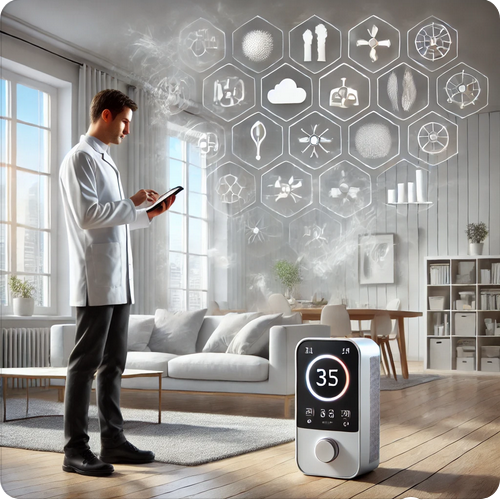Think about the air inside your home. Clean? Fresh? Or are you occasionally unsure? Indoor air testing helps us know what we’re really breathing, offering peace of mind and solutions for healthier living spaces. Whether it’s to address allergies, asthma, or simply to enjoy cleaner air, indoor air testing is the first step toward a fresher, healthier environment.
Why Test Indoor Air?
We spend a lot of time indoors—up to 90% of our lives, in fact. And surprisingly, indoor air can be up to five times more polluted than outdoor air. How? Dust, pollen, pet dander, mold, VOCs (volatile organic compounds) from cleaning products, and even certain household items can all add up to create an invisible cocktail of pollutants. Indoor air testing allows us to detect and understand the levels of these pollutants, giving us the chance to address them before they cause health issues.
What Indoor Air Testing Checks For
Indoor air testing isn’t just a quick once-over. It’s a thorough assessment of your indoor environment, focusing on common pollutants and allergens, including:
- Particulate Matter: Things like dust, pollen, and smoke that can irritate the respiratory system.
- Volatile Organic Compounds (VOCs): These are chemicals emitted as gases from everyday products like paints, cleaners, and even furniture. Some VOCs can cause headaches, nausea, and other symptoms.
- Mold and Mildew: Mold spores thrive in damp, humid conditions, so indoor air testing checks for moisture and hidden mold, which can worsen allergies or asthma.
- Carbon Monoxide (CO): This dangerous, odorless gas can come from faulty heating systems and is a serious health risk if undetected.
- Humidity Levels: Although not a pollutant, humidity plays a big role in air quality. Excess moisture encourages mold growth, while dry air can irritate the respiratory system.
Each of these elements can impact comfort, health, and safety at home. Indoor air testing helps pinpoint the specific pollutants, giving you a clear picture of your indoor air.

The Indoor Air Testing Process
Indoor air testing is a straightforward process handled by professionals with specialized equipment. Here’s a quick look at how it works:
- Initial Assessment: A technician assesses your home and decides which tests are necessary based on your concerns or symptoms.
- Air Sample Collection: They use air sampling devices to capture the air’s content. Some devices sample over a period of hours or even days, especially if they’re testing for things like VOCs or allergens that fluctuate over time.
- Analysis: Samples are sent to a lab, where they’re analyzed for pollutants. This analysis reveals exactly what’s in the air and in what concentrations.
- Recommendations: Once the results are in, you’ll receive a report and recommendations for improving your air quality. This might mean installing an air purifier, increasing ventilation, or addressing mold in specific areas.
Why Indoor Air Testing Matters for Health
Poor indoor air quality isn’t just a nuisance; it can have long-term health effects. Those with asthma, allergies, or respiratory issues are more vulnerable, but even healthy individuals can develop symptoms like headaches, fatigue, and eye irritation. For families with young children or seniors, indoor air quality is especially crucial, as they’re more susceptible to airborne pollutants.
Addressing air quality issues can make a significant difference. Cleaner air can improve sleep quality, increase focus, and even boost energy levels. And for many people, indoor air testing provides clarity and peace of mind.
Indoor Air Testing: Is It Right for You?
Not sure if you need indoor air testing? Here are some situations where testing might be worthwhile:
- Frequent Allergies or Illnesses: If you notice recurring symptoms like sneezing, coughing, or headaches, indoor air testing can reveal hidden allergens.
- After Home Renovations: New paint, furniture, or carpeting can release VOCs into the air, making testing a wise choice.
- Persistent Odors: If there’s a musty or chemical smell in your home, testing can help determine the source.
- Visible Mold or Water Damage: Mold can spread quickly and affect air quality, so testing can guide you in resolving the issue.
Indoor air testing offers the insight you need to tackle pollutants directly. Whether you’re aiming to solve specific symptoms or simply want a healthier home, it’s an investment in peace of mind and well-being.